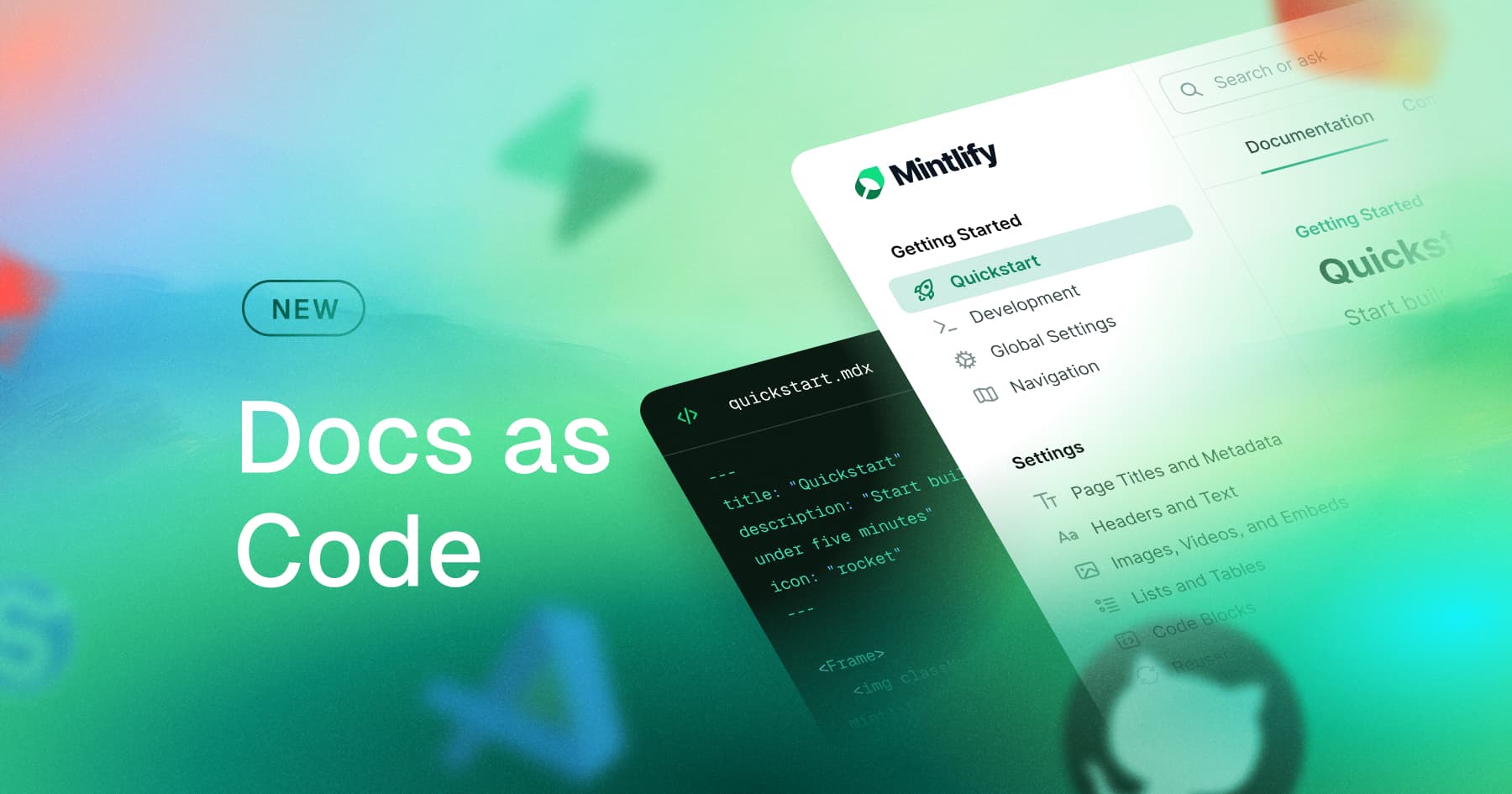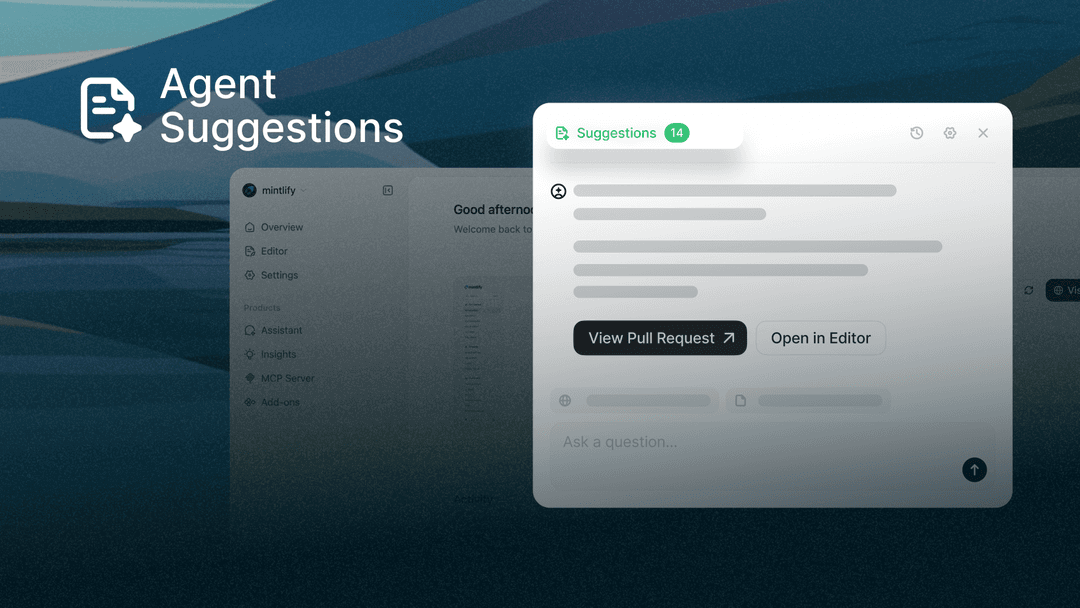Tiffany Chen
Marketing
Share this article

Docs as Code integrates documentation management into existing developer workflows using Git, Markdown, and version control to reduce friction and increase motivation for developers to contribute. Success requires cultural changes like including docs in performance reviews and choosing the right tech stack, whether building in-house or using platforms like Mintlify that support both developer and non-technical workflows.
We all suffer from documentation lagging behind product updates.
It's a particularly hard problem because developers should own documentation since they know the details best, but they often hesitate to use tools outside their familiar git workflows or IDEs.
A docs-as-code approach helps integrate docs management into existing developer processes, making it easier to keep everything up-to-date without feeling like a burden.
What is “Documentation as Code”?
Docs as Code means that you approach writing documentation like how you write code, with the same tools and workflows.
That entails:
- Writing documentation in plain text like Markdown
- Using a version control system like Git
- Reviewing changes before they're deployed
When documentation lives alongside code, developers don't have to change anything about how they work—they can track changes, submit pull requests, and use automated build processes. There's no risk of outdated drafts or scattered feedback.
Integrating into existing workflows significantly reduces friction (and increases motivation) for developers to contribute to documentation. Writers and developers can collaborate in a shared system, making it easier to review edits and keep documentation up-to-date.
Make adoption easier with the right practices
Docs as Code reduces friction, but it doesn't eliminate the need to put in work to update content. The best way to systemically change how developers view documentation is to incorporate it into your existing rituals and rewards.
For example, you can add developer documentation to your main repository and require that developers make code and docs changes in the same pull request. By building off the existing review process, you can frame documentation as a natural extension of a project. Or in product review documents (PRDs), you can set the definition that a project is only considered “Done” when documentation is complete.
Follow Stripe's rewards structure
You can also take a page from Stripe's playbook by recognizing contributions to documentation in performance reviews. Stripe encourages developers to invest in docs by including it in their engineering career ladder. Instead of documentation being an afterthought, it's elevated to the same sphere as shipping code, which significantly improves motivation to write.
Making documentation part of your existing rituals helps everyone see it as a core part of building something great—not just an extra step.

However, a cultural shift is useless without the proper tools.
Choosing the right tech stack for developers
To adopt Docs as Code, you can build the system from scratch or bring on a provider.
Building an in-house documentation tool gives you control over customizability, but it's no small task. It often means setting aside dedicated engineering and design resources to organize content, build patterns, and manage the infrastructure—all of which can add to tech debt and take time away from core development work. And after all that, the end result might still fall short of your product's quality standards.
The alternative is to bring on a third-party solution. There's no shortage of options—several popular documentation tools have been around since the 2010s, created to simplify the process.
In the last few years, expectations for documentation tools have evolved, and platforms like Mintlify are gaining traction by focusing on the developer experience of docs management. With features like auto-generated APIs and deployment previews, Mintlify is now widely used by engineering teams at companies like Anthropic and Scale AI.
Try Docs as Code today
Docs as Code is key for modern teams to create the smooth user experiences people expect today. It takes a mix of cultural change and the right tools, but it's very achievable and can boost both the efficiency and quality of your docs.
If you're interested in revamping your approach to documentation today, get in touch for a free preview of how your docs could look in Mintlify.
More blog posts to read

Closing the loop between user questions and documentation
Learn how Mintlify now surfaces documentation updates not only from pull requests but also from real user conversations, giving teams a clearer and more complete signal of what needs to change
January 7, 2026Han Wang
Co-Founder

2025: A Year in Review
Scaling to 8-figures ARR, onboarding 10,000+ companies, and evolving from a documentation platform into the infrastructure layer for how AI understands technical knowledge.
December 31, 2025Han Wang
Co-Founder
Tiffany Chen
Marketing